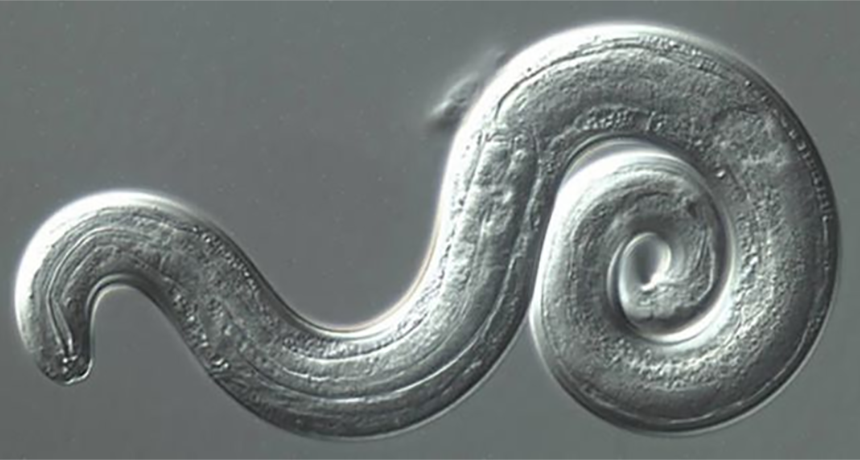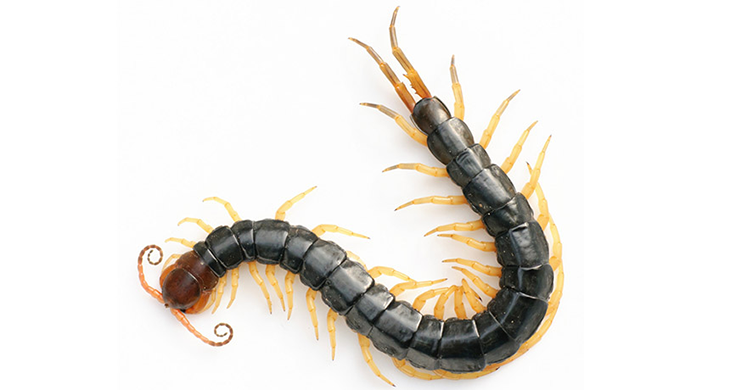Parasitic worms sicken people in the mainland United States
Infected produce or raw slugs may be the source, experts say

This parasitic roundworm causes rat lungworm disease.
DPDx/CDC
Health officials have reported cases of a new infectious disease in eight continental U.S. states. Called rat lungworm, it has sickened 12 people since January 2011. The parasites that cause the disease are typically found in tropical Asia. At least six of the new U.S. patients, however, had never been overseas.
It is likely, therefore, that people are picking up the disease locally, note Eugene W. Liu and his colleagues. Liu works for the Centers for Disease Control and Prevention in Atlanta, Ga. His team’s new report appeared August 3 in Morbidity and Mortality Weekly Report.
Previous studies have turned up signs of the worms in U.S. wildlife. Liu’s team points to findings of the parasites in rats and snails from Florida, Louisiana and Oklahoma. Rat lungworm larvae also have been found in opossums and armadillos.
Susan Montgomery also works at the CDC. This coauthor of the new study is an epidemiologist. That means she works as a disease detective to hunt down what has made people ill. In the new U.S. cases, she says, “We don’t know exactly the source of the infection.” But it’s possible these were not the only cases, she says. Montgomery’s team tracked only cases based on samples of brain-and-spinal fluid that had been sent to the CDC for testing. Some people who host rat lungworms show no symptoms. So they would never be tested, she notes.
The new patients were identified because they complained of headache, fever, nerve tingling and weakness. Some also had excess white blood cells in their brain-and-spinal fluid. That signaled possible meningitis (Men-in-JY-tis) — an inflammation of the membranes that cover the brain and spinal cord. In the past, some people have died from rat lungworm disease.
This illness takes its name from the fact that the small roundworms spend part of their lives in the lungs of rats. That’s where the worms hatch. Eventually, the larvae make their way into the animals’ gut, where some will be shed in feces. Snails, slugs and other animals that eat or come into contact with those feces may then pick up the worms. People who eat those animals may then become infected.
More than half of the new U.S. cases involved people who had eaten raw vegetables. That produce likely contained a small snail or slug that was then eaten by accident, the researchers say. At least one of the new cases was a toddler who ate slugs while playing.
Of the six cases affecting people who never went to Asia or Hawaii, four lived in Texas, one in Tennessee and one in Alabama. But some mainland U.S. residents certainly could become infected while travelling inside their country — as in Hawaii. Last year, CDC turned up at least 18 cases in those U.S. islands.
The new rat lungworm cases point to why “fresh produce really should be washed thoroughly and carefully,” says Montgomery.
What more, slugs or snails aren’t the only potential dietary sources of the parasites. Chinese doctors, for instance, have just added centipedes to the list. They had encountered a woman and her son who came down with the disease after eating raw centipedes. Researchers went back to the local market where they had been purchased and bought more centipedes. Some of them indeed hosted rat lungworms. A report of that finding appeared July 30 in the American Journal of Tropical Medicine and Hygiene.








